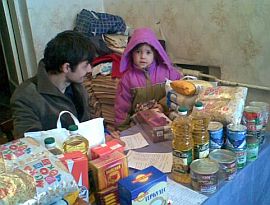Analytics, EU – Baltic States, Financial Services, Latvia, Society
International Internet Magazine. Baltic States news & analytics
Saturday, 20.04.2024, 14:30
Families with children in Latvia more exposed to risk of poverty than in any other EU country
 Print version
Print version |
|---|
Mezs believes that this, given the critical demographic situation in Latvia, is unacceptable, as the demographer's representative, Tija Ezerina, told LETA.
According to Mezs, the risk has been greatly reduced in Estonia with the help of various financial aid instruments, and the demographic situation there has been stabilized. For instance, family benefits in Estonia are three to four times higher than in Latvia, whereas low-income earners and parents who are out of job are entitled to much higher benefits. Childcare benefits are also significantly higher than in Latvia, all schoolchildren are entitled to free lunches, the government also helps young families buy their first home, and suchlike.
Mezs indicates that the pension system in Latvia is fundamentally unfair to women – that is, women with children will always receive smaller pensions than women who work in the same job, for the same period of time, and for the same salary. "However, it is these women's children who will work in the future and whose contributions will be used to pay pensions. It can be said that women who make the most important contribution to the pension system – women whose children will become taxpayers in the future – are the ones to receive less from the system," says the demographer.
Mezs goes on to say that he is aware that many employers in Latvia prefer to hire people without children. The "solidarity tax" proposed by MP Imants Paradnieks (All For Latvia-For Fatherland And Freedom/LNNK), which the public refers to as the "tax on childlessness", would be a fair step, but it would not be enough to solve the problem.
In Mezs' opinion, more measures are necessary – for instance, the state contributions in the pension capital of today's young mothers should be increased, or their pension capital could be indexed 5% to 10% for every child.
This, however, will not solve the problem of mothers who already have children, or women who already receive lower pensions, adds the demographer.
For a pension system to be viable, the number of working residents has to be at least twice as high as the number of pensioners. If not, either pensions have to be very low, or taxes very high. The proportion between the working population and pensioners will only improve when birthrate is exceeding mortality for a long period of time, says Mezs.
He estimates that the current situation is comparatively favorable, as young people, born in the 1980s and 1990s, are entering the job market now. But the pressure on the pension system will increase when those born at the end of the 1990s arrive on the labor market, as their number is two times smaller.
Normal development requires that 1.5% to 1.6% of population is born every year, therefore the current tax system, which is unfair to families with several children, and the weak support for families have to be changed. At the moment, 1% to 1.1% of population is born annually, therefore the state policies have to be changed, which is what the Estonian government, for instance, has been doing.
As reported, Paradnieks has proposed to differentiate the non-taxable minimum income and child support benefits, linking them with the average wage in the country and the minimum income level. The politician also urges to assess the opportunity to reduce employers' social contributions and to consider introducing a "tax on childlessness".








 «The Baltic Course» Is Sold and Stays in Business!
«The Baltic Course» Is Sold and Stays in Business!

